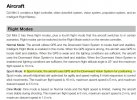I fly over creeks and the like, seemingly more often than I'd like. Sometimes I get very low on the water, and a couple times now this has triggered the auto land sequence. Fortunately I reacted fast enough and brought the drone back up. Can auto-landing be disabled, while keeping the ground sensor activated? So no matter how long you hold down on the control, the drone will not go any lower than the minimum ground sensor allowed height.
I see lots of posts for disabling ground sensors, but that is not what I'm wanting to do. I would land via grabbing the drone (my usual method) or perhaps using the land command in the fly app.
I see lots of posts for disabling ground sensors, but that is not what I'm wanting to do. I would land via grabbing the drone (my usual method) or perhaps using the land command in the fly app.










